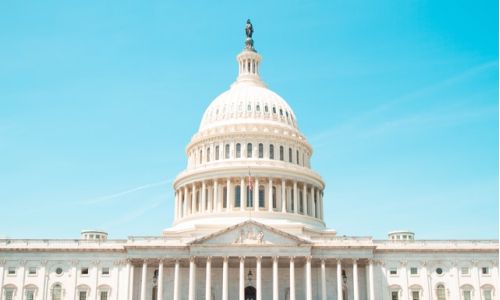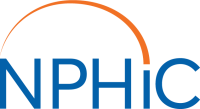Sharing Knowledge
Expertise
Resources
Making Public Health Public
Premier Network of
Public Health Communicators
Increasing the Dissemination of
Accurate Information
2025
National Conference on Health Communication Marketing and Media
Short Reel: "Voices, Vision, and Vibes – A Recap”
Thanks to all who attended and made the week so special!
2025
National Conference on Health Communication Marketing and Media
Short Reel: "Voices, Vision, and Vibes – A Recap”
Thanks to all who attended and made the week so special!
LATEST NEWS HIGHLIGHTS

Former CDC Leaders Outline a Plan to Rebuild Public Health
At the APHA 2025 session “Discussion with Former CDC Leaders: The Way Forward,” three former CDC leaders explored strategies to strengthen public health amid ongoing federal challenges. Panelists emphasized the critical role of state and local health departments as the frontline of community protection, especially as federal support faces uncertainty. They highlighted the need to create public value, embrace digital literacy, and adopt innovative communication strategies to engage communities.
Despite staffing reductions and funding pressures, leaders encouraged public health professionals to remain committed, noting that demand for services remains vital. Strategic local investment and effective outreach are essential to sustaining nationwide public health impact. Read more from APHA here.

KFF’s ACA Enhanced Premium Tax Credit Calculator
A new analysis from KFF highlights the potential public health impact if enhanced Affordable Care Act (ACA) premium tax credits expire at the end of 2025. These credits currently reduce out-of-pocket premiums for over 24 million Marketplace enrollees, many with middle- and lower-income households.
Without the enhanced credits, average annual premiums could more than double, increasing from $888 to $1,904, with some middle- and higher-income families facing drastic cost hikes. Rising premiums risk reducing access to essential health coverage, potentially worsening health disparities. KFF’s ACA Enhanced Premium Tax Credit Calculator, updated for 2026, allows users to see how much more individuals would pay without the enhanced credits.

The Epidemiologists Are Running for Office
A growing number of epidemiologists, physicians, and scientists are entering political races across the country, signaling a shift in how public health professionals engage with policymaking. These candidates, including former CDC leaders and state health officials, are bringing evidence-based perspectives and public health experience to the political arena.
Their participation reflects a broader recognition that science and health policy are deeply interconnected — and that trusted voices in public health can help shape informed, effective decision-making. For communicators, this trend underscores the importance of maintaining public trust while conveying the value of science-driven leadership in government. Read more from The Atlantic here.
FEATURED TOPICS
WHO Warns of Widespread Resistance to Common Antibiotics Worldwide
Written on

A new WHO report warns that antibiotic resistance is rising globally, with one in six bacterial infections in 2023 resistant to treatment. Drug-resistant Gram-negative bacteria, including E. coli and K. pneumoniae, are increasingly linked to severe bloodstream infections, with resistance exceeding 70% in some regions. Between 2018 and 2023, resistance rose in over 40% of monitored pathogen-antibiotic combinations.
While participation in the WHO GLASS surveillance system has grown, nearly half of countries still lack reliable data, particularly where health systems are weakest. WHO urges countries to strengthen laboratory capacity, report high-quality data, and implement coordinated interventions to preserve antibiotic effectiveness and guide public health policies. Read more from WHO here.
Trust in Media at New Low of 28% in U.S.
Written on

Trust in U.S. news media has reached a historic low, with only 28% of adults expressing confidence in newspapers, television, and radio to report fully, fairly, and accurately. Confidence has declined across all partisan groups, with Republicans’ trust now in single digits (8%), independents at 27%, and Democrats holding a narrow majority (51%).
Generational divides are pronounced: adults 65 and older show higher trust, while younger adults remain highly skeptical. For public health communicators, these trends underscore the challenge of effectively conveying health information in a polarized media environment and highlight the importance of building credibility and trust with diverse audiences. Read more from Gallup here.
2024–25 Flu Season Sees Record Pediatric Deaths: CDC Urges Vaccination
Written on

The 2024–25 influenza season saw the highest number of flu-associated pediatric deaths during a regular, non-pandemic season since national reporting began in 2004. As of September 13, 2025, 280 pediatric deaths were reported, with a median age of 7 years; over half had underlying medical conditions. Among those eligible and with known vaccination status, 89% were not fully vaccinated.
CDC emphasizes that children under 5, especially under 2, and those with chronic conditions are at higher risk of severe flu complications. Annual flu vaccination for all individuals six months and older remains the most effective strategy to reduce serious illness and death. Read the MMWR from the CDC here.
PHCC Offers New Graphics and Messaging for the 2025-26 Respiratory Illness Season
Written on

Public Health Communication Collaborative (PHCC) offers new social media graphics and messaging for public health communicators to support community preparation for the 2025–26 respiratory virus season, running November through April. Available in English and Spanish, these resources help explain respiratory virus prevention, updated vaccine eligibility, and the importance of COVID-19 and other vaccinations for both children and adults.
Step-by-step guides make it easy to encourage community members to find, schedule, and attend vaccine appointments. Early, clear communication can help reduce severe illness, increase vaccination coverage, and strengthen community resilience throughout the upcoming respiratory virus season. Find PHCC’s resources here.
Latest Blog Posts
Podcast
"Public Health Speaks"
A bi-monthly podcast series about public health issues to educate, inform and assist our members, partners and affiliate organizations in understanding and overcoming urgent communication challenges
From Our Partners
CDC Online Newsroom
- Salmonella outbreak linked to moringa leaf, an ingredient in powdered supplements
- CDC continues to note illnesses despite product recalls and asks consumers to check for recalled foods in Listeria outbreak linked to prepared meals
- CDC Immunization Schedule Adopts Individual-Based Decision-Making for COVID-19 and Standalone Vaccination for Chickenpox in Toddlers
- Statement from Laura Chanchien Parajón, MD, MPH, Director (Acting), CDC's National Center for Chronic Disease Prevention and Health Promotion, on the passing of Suzy Ellis, Tips From Former Smokers® participant
- Listeria Outbreak to include more Prepared Foods
- CDC Reports Latest National Data on Syphilis in Newborns and Sexually Transmitted Infections (STIs)
- CDC Report Finds Sharp Rise in Dangerous Drug-Resistant Bacteria
- Statement from Laura Chanchien Parajón, MD, MPH, Director (Acting), CDC's National Center for Chronic Disease Prevention and Health Promotion, on the passing of Michael Fletcher, Tips From Former Smokers® participant
CDC Latest COVID-19 Science Update
CDC FluView Weekly Summary
CDC Morbidity and Mortality Weekly Report
- Recommendations and Reports: Tularemia Antimicrobial Treatment and Prophylaxis: CDC Recommendations for Naturally Acquired Infections and Bioterrorism Response - United States, 2025
- Interim Effectiveness Estimates of 2025 Southern Hemisphere Influenza Vaccines in Preventing Influenza-Associated Outpatient and Hospitalized Illness - Eight Southern Hemisphere Countries, March-September 2025
- Influenza-Associated Pediatric Deaths - United States, 2024-25 Influenza Season
- Pediatric Influenza-Associated Encephalopathy and Acute Necrotizing Encephalopathy - United States, 2024-25 Influenza Season
- Erratum: Vol. 74, No. RR-1
GET INVOLVED! NPHIC SOCIAL MEDIA
NPHIC YouTube Channel
- Antimicrobial Resistance Option SRIR & pSIR Modeling
- Teen Workers: Real Jobs, Real Risks (Mallory’s Story)
- OneLab VR Autoclave Safety Scenario
- Introduction of Laboratory Director University (LDU) Promo Video
- U.S. Firefighters: Join the NIOSH NFR and Fight Cancer Together
- Tell Us About Your Fire Service | Join the NIOSH NFR for Cancer
- Answer the Call: Join the National Firefighter Registry for Cancer
- The Path of Yeast Resistance: Drug-resistant Candida on the Rise - Sept 18



















